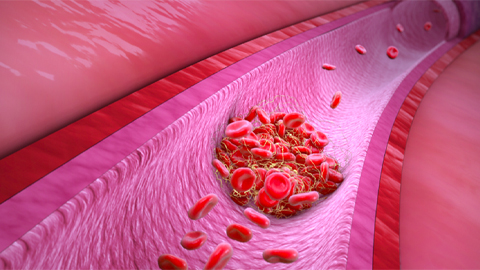Move over, DNA. The future is protein
In the coming decades, efforts to understand disease will be propelled by building 3D maps of protein arrangements in cells over time, a team of scientists says.
A workshop about the study of proteins on a large scale — proteomics — yielded a perspective piece that is part vision, part plan, recently published in the journal Molecular & Cellular Proteomics.
DNA is like a game plan, explains Neil Kelleher, a researcher at Northwestern University who was involved in the study, and RNA is like the team huddle; it’s what the cell decides to do with the circumstances on the day.
It’s time to watch the game itself. “This is the decade,” Kelleher said.

Watching the game
“Traditionally, we study one protein or pathway at a time,” the authors write, because “the cell is otherwise too complex.”
That’s like watching one player over time and whom they pass to.
Proteins take multiple forms in a cell after they come off the bench. An electric link between fans and footballers inspires the play that decides a championship. A comment or word from a coach flicks a switch. In the cell, such switches can be as simple as a few atoms added (phosphorus and a trio of oxygens are a popular one). Altered by their circumstances, proteins are like people.
Mapping their shapes over time will be game-changing.
“This could impact all diseases,” said Kristin Burnum–Johnson of Pacific Northwest National Laboratory, first author of the paper.How will this happen?
Bottoms up, touchdowns
Scientists will tackle this from two directions: bottom-up and top-down. They start with clinical tissue samples, Burnum–Johnson explained.
"For bottom-up approaches, you extract proteins from tissue regions and break them into identifiable peptides (shorter strings of proteins).”
Bottom-up strategies, combined with RNA and metabolite data, will reveal the lineup. Top-down strategies will yield those sweet, sweet action shots.
Kelleher knows about this. The top-down approach, revealing the specific forms proteins take (which RNA sequencing can’t tell you), has become so sensitive that his research recently found 30,000 precise forms of proteins in blood and bone marrow alone. That’s almost 10 times more than in previous studies. There are thousands more cell types for postgame analysis.
Single-minded
Researchers will continue pushing for higher resolution. They’ll need to integrate data, which is not a simple challenge. They’ll need to think beyond stadium walls; the extracellular matrix is rich. Like football and cells alike, consortiums and partnerships will drive the process. The National Institutes of Health wants research gaps to be identified, and private investment is supporting the sequencing of single molecules. These combined efforts remind Kelleher of the Human Genome Project.
The central dogma of biology is DNA to RNA to protein. It’s only natural that scientific research follows the path that is familiar. It’s protein’s turn.
Enjoy reading ASBMB Today?
Become a member to receive the print edition monthly and the digital edition weekly.
Learn moreGet the latest from ASBMB Today
Enter your email address, and we’ll send you a weekly email with recent articles, interviews and more.
Latest in Science
Science highlights or most popular articles
Universal tool for tracking cell-to-cell interactions
A team of researchers has developed LIPSTIC, which can lay the groundwork for a dynamic map tracking physical interactions between different cells — the elusive cellular interactome.

Weedy rice gets competitive boost from its wild neighbors
Rice feeds the world. But researchers have found that a look-alike weed has many ways of getting ahead.

From the journals: JLR
A “T” makes a difference in blood clotting. High cholesterol: two screens are better than one. Biomarkers for cardiovascular risk. Statin-induced changes to the HDL lipidome. Read about recent papers on these topics.

Decoding microglial language
Emory University scientists characterize extracellular vesicles that facilitate intercellular communication.

What is metabolism?
A biochemist explains how different people convert energy differently – and why that matters for your health.

What’s next in the Ozempic era?
Diabetes, weight loss and now heart health: A new family of drugs is changing the way scientists are thinking about obesity — and more uses are on the horizon.

